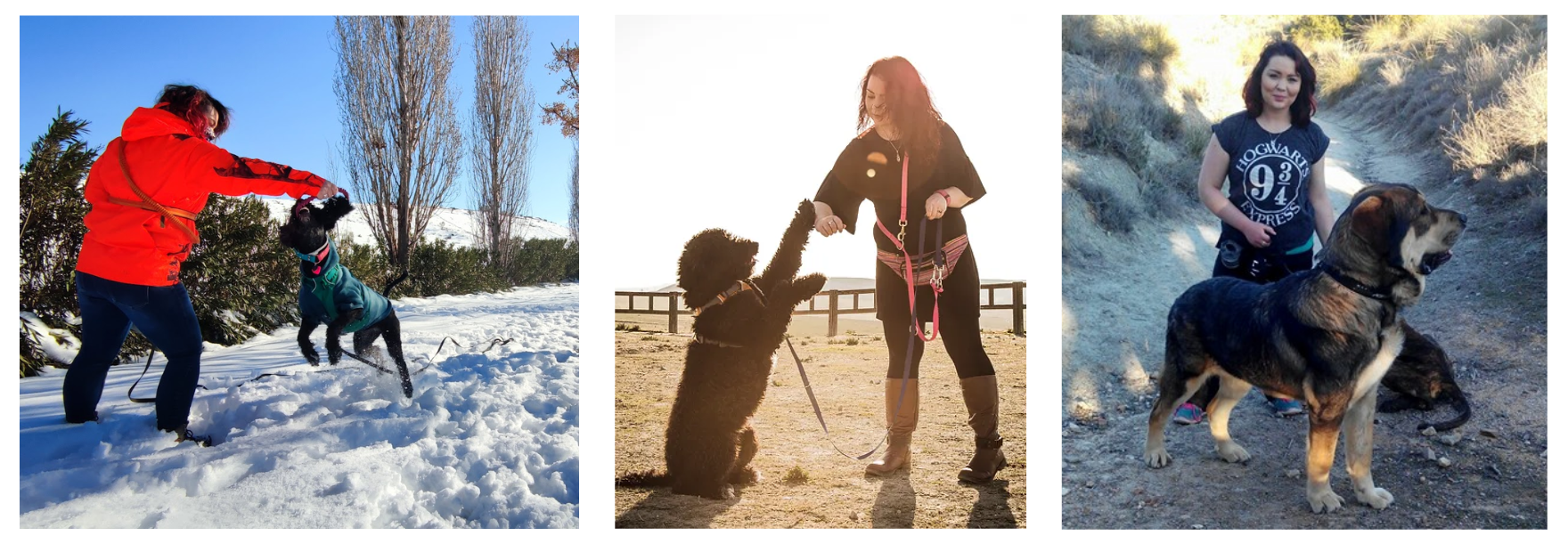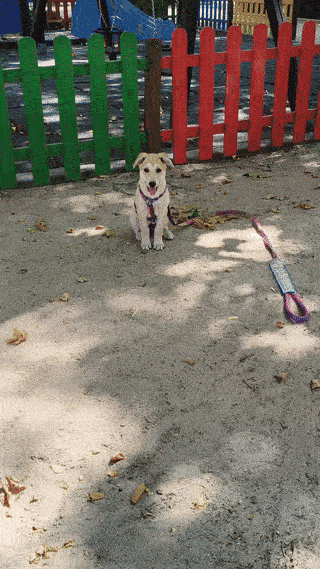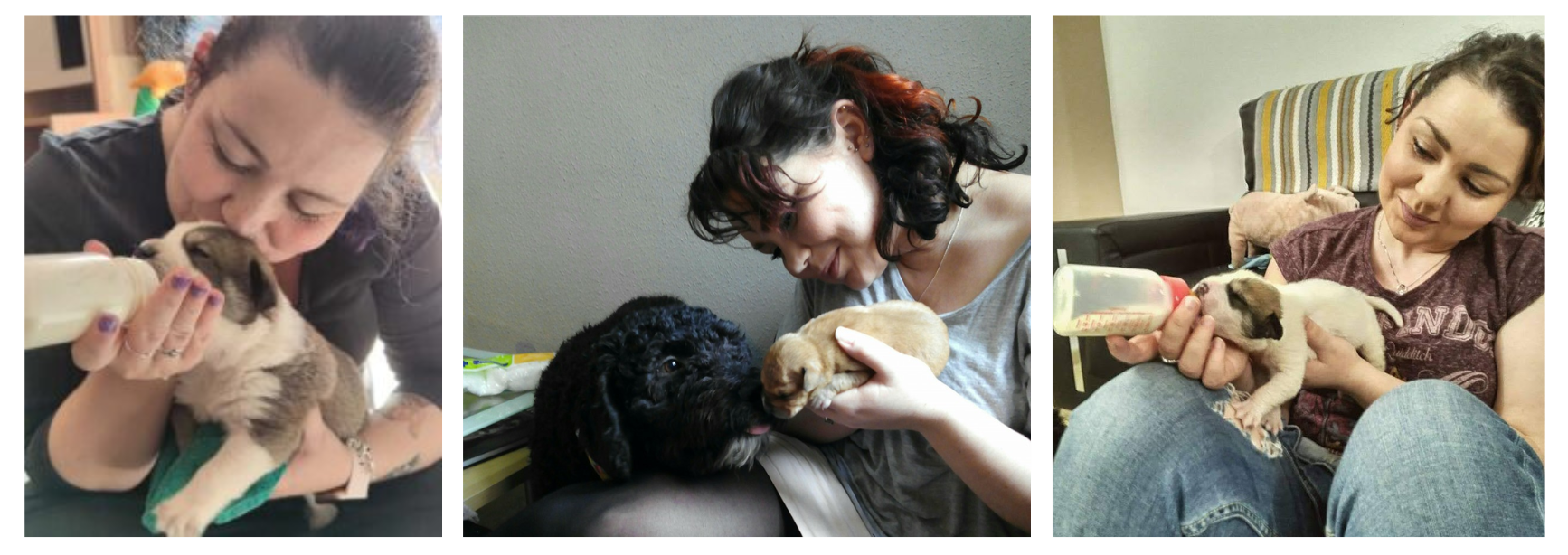 Hi, I’m Lou! By day, I’m a Customer Success Engineer at SMTP2GO but in my free time, I’m also Doctor Loulittle. I’m a Canine Behaviour Expert and I’ve spent many years helping people to improve their relationships with their dogs. It might surprise you that I see many parallels between training puppies and managing email communications.
Hi, I’m Lou! By day, I’m a Customer Success Engineer at SMTP2GO but in my free time, I’m also Doctor Loulittle. I’m a Canine Behaviour Expert and I’ve spent many years helping people to improve their relationships with their dogs. It might surprise you that I see many parallels between training puppies and managing email communications.
In both puppy training and email marketing, the most important elements are trust, engagement, and reliable reinforcement. Just as you can train a puppy to respond reliably and enthusiastically, you can train your email list to engage with your communications.
Building Trust in Your Relationship
Whether you’re working with a puppy or a mailing list, trust is the foundation of a successful relationship. Your puppy needs to trust that they can rely on you, and your email recipients need to trust that your communications are valuable and reliable. In puppy training, trust is built through consistent, positive interactions. Your puppy learns to associate you with good things, like treats and praise. They trust in you to keep them safe and to provide for them. Similarly, you build trust with your email recipients by consistently sending valuable, relevant content (not just handing out freebies and discounts!) When your emails consistently provide value, your recipients will look forward to them, just as your puppy eagerly anticipates training sessions and spending time with you.
Engagement: The Key to Success
Engagement is vital for both dog training and email marketing. Without it, you’re left with a puppy that doesn’t learn and an email list that doesn’t convert. To keep a puppy engaged, I make sure to provide them with varied activities and rewards. This makes the puppy more responsive to cues and helps them see me as more interesting than the distractions around them. Similarly, engaging your email recipients with a diverse range of content is essential. Combine informative articles, promotional offers, and interactive elements like surveys, videos, or quizzes to capture their interest. An engaged audience is more likely to act on your emails, improving deliverability, just as an engaged puppy is more likely to come running when you call them.
Building a Reliable Reinforcement History
Reinforcement history is about creating a pattern of positive outcomes that your puppy or email recipients can rely on. This builds anticipation and engagement over time. When you call your puppy, it’s not just about what you have in your hand at that moment. It’s about all the positive experiences they’ve had every time you’ve called them in the past. Similarly, when you send an email, it’s not just about that single message. It’s about the history of valuable, engaging content you’ve consistently provided over time. This history encourages recipients to open and engage with your emails. They know from experience that your emails are worth their time.
Using Variable Rates of Reinforcement
Variable reinforcement increases focus and anticipation. This concept works wonders in both puppy training and email marketing. Reward your puppy with different rewards (treats, toys, fuss, play…) at varying intervals, so they never know exactly when a treat is coming, and they never know what they’re going to get. This keeps them focused and eager. Similarly, surprise your recipients with varied and unexpected content. Sometimes it’s a discount, other times it’s an exclusive piece of content or a special announcement. This keeps them excited to open your emails, not knowing what they might receive next. The element of surprise can significantly boost engagement.
Consistency and Patience
Training a puppy and building an email relationship both require consistency and patience. You can’t expect immediate results; you need to build a strong foundation first. Be consistent with cues and rewards in puppy training. Patience is key as your puppy learns new behaviors over time. Similarly, be consistent with your sending schedule and the quality of your content. Over time, this consistency will pay off as your recipients come to expect and look forward to your emails. Building a loyal audience takes time, just as training a well-behaved puppy does. At the beginning, it might seem like progress is slow, but with perseverance and dedication, you’ll start to see the benefits.
Setting Clear Boundaries and Establishing Rules
Clear boundaries and rules help manage expectations and behavior, whether it’s with a puppy or an email list. We need to teach our puppy what’s acceptable and what’s not through clear cues and boundaries. Similarly, set clear expectations with your email recipients. Use a clear and direct subject line, and ensure your content aligns with what your audience expects. Establish and follow rules for frequency and content types. Clear boundaries create a sense of security and reliability, both for your puppy and your email recipients.
Clear Communication
Being direct in your communication ensures that both your puppy and your email recipients understand what you’re asking for. Use short, consistent cues so your puppy knows exactly what you want. Similarly, be direct in your emails, and include clear CTAs. Your recipients should immediately understand the value and action you’re asking for. Clarity in communication reduces confusion and enhances response rates.

Loose Leash Walking: Walking Together in Harmony
Training your puppy to walk on a loose leash isn’t just about teaching them to follow the lead and do what you say. The key is to teach your puppy to walk with you, to want to be with you, so that they follow you even when they’re off-leash. This principle applies to your email marketing as well. Your customers need to want to interact with you; they need to feel a connection and desire to engage. If your emails are just commands without building a relationship, your marketing campaigns will fall flat. Create content that invites your recipients to walk with you, fostering a sense of companionship and mutual interest.
Ensuring Your Emails Are Authenticated: The ID Tag of Email Marketing
In the same way that an ID tag and a microchip on your puppy ensures they can be identified and safely returned to you if they wander off, authentication protocols like DKIM, SPF, and DMARC ensure your emails are recognized as legitimate. DKIM (DomainKeys Identified Mail) adds a digital signature to your emails, verifying they haven’t been altered. SPF (Sender Policy Framework) checks that incoming mail from a domain comes from an authorized server. DMARC (Domain-based Message Authentication, Reporting, and Conformance) ties these protocols together, specifying how your domain handles unauthenticated emails. Just as an ID tag and a microchip make it clear that your puppy belongs to you, VERP authentication confirms to email service providers and recipients that your emails have come from you, increasing the likelihood your emails reach their intended inboxes.
Nurturing Your Puppy and Mailing List
Nurturing is about ongoing care and attention, fostering growth and a positive relationship. Regular training sessions, playtime, and care nurture your puppy’s growth and your bond. Likewise, it’s important to regularly engage with your mailing list, to nurture it with valuable content, and to show appreciation for your subscribers. A nurtured list is more likely to remain loyal and responsive.
Domain and IP Address Reputation: Your Email’s “Breed Reputation”
Your domain and IP address reputation in email marketing can be likened to your dog’s breed reputation (fairly or not!) Imagine you’ve got a happy, wriggly, barky Golden Retriever puppy—people are naturally drawn to say hi because they exude positivity and trustworthiness, and the breed has a good reputation for being friendly. However, if you’ve got a happy, wriggly, barky Rottweiler puppy, even if he’s friendly, people will hesitate before saying hi because of the reputation that the breed often has.
Similarly, a positive reputation for your domain and IP address means your emails are seen as trustworthy, increasing the likelihood they’ll land in the inbox. On the other hand, a poor reputation can lead to your emails being flagged as spam or ignored. Just as you work to ensure your puppy maintains a friendly, approachable demeanor, maintaining good email practices helps build a positive reputation, fostering better interactions and deliverability.
Finding Success in Proper Planning
Proper planning and clear criteria are crucial for both puppy training and email marketing. I like to use the Push, Drop, Stick training system to determine when to progress with a behaviour that I’m training. I’ll ask the puppy for a behaviour five times. If they excel and get it correct five times, I push them to the next level and I’ll ask them for something slightly more difficult in the next five repetitions. If they struggle and only get it right once or twice, then I drop it back to an easier ask. If they perform well, then I’ll stick with it until it’s reliable. This method is akin to A/B testing in email marketing. Experiment with different subject lines, content formats, and send times to see what resonates best. Use these insights to refine your strategy, advancing what works, discarding what doesn’t, and maintaining successful elements.
 Knowing When It’s Time to Say Goodbye
Knowing When It’s Time to Say Goodbye
It’s never easy to say goodbye, whether it’s parting with a beloved dog or allowing email subscribers to unsubscribe. For our pets, making tough decisions is often about ensuring their well-being and comfort. In the same way, respecting your email recipients’ choices is an important aspect of maintaining a healthy relationship. If someone no longer finds value in your emails, make the process of unsubscribing simple and respectful. This not only keeps your list engaged and positive but also ensures you focus on those who genuinely want to hear from you. A smaller, more engaged audience is always preferable to a large, disinterested one, and it helps nurture a community that values your communication.
Seeking Expert Help When Needed
Just as in dog training, where specialized help is invaluable for issues like separation anxiety, reactivity, or puppy training, finding the right expertise can make a significant difference in email marketing. If you’re encountering challenges with your email campaigns or struggling with deliverability issues, consider reaching out to professionals who can offer tailored advice and solutions. SMTP providers, deliverability experts, and marketing consultants are akin to the dog trainers who specialize in specific areas. They can help you fine-tune your strategies, optimize your campaigns, and ensure your emails reach their intended recipients. Just as investing in expert help for your puppy can lead to better results and a stronger bond, working with specialists in email marketing can help you overcome hurdles and achieve success in your campaigns.
Comparing email marketing to puppy training might seem unusual, but the core principles are remarkably similar. Building trust, fostering engagement, and maintaining consistency are essential in both domains. Just as with training a puppy, creating a history of positive interactions and keeping your approach varied can enhance engagement with your emails. Patience and a commitment to nurturing your relationships are key to transforming your email communications into a powerful tool for success. By planning thoughtfully and adapting based on feedback, you can continually refine your strategies. Whether working with a playful puppy or an engaged email list, applying these strategies thoughtfully will lead to meaningful and impactful results.
Inbox Expo 2025
If you’re interested in learning more about applying the principles of puppy training to your emails, you don’t want to miss Inbox Expo 2025! I’ll be speaking at the event on in Austin, Texas. It’s an incredible opportunity for learning and networking, featuring some of the biggest names in the industry. If you’d like to join us, the code SMTP2GO15 will get you a 15% discount on your ticket.









